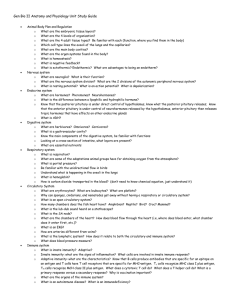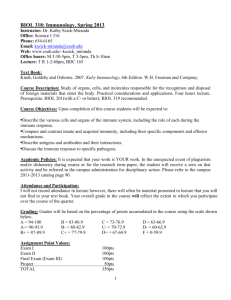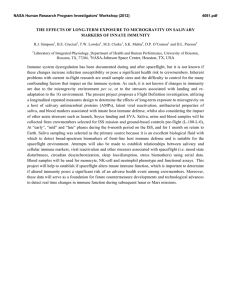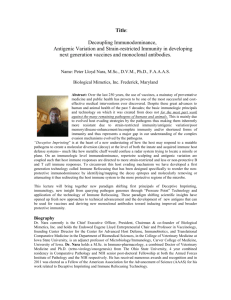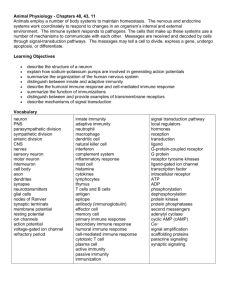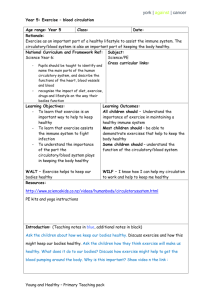Unit 9 II - Hinsdale South High School
advertisement
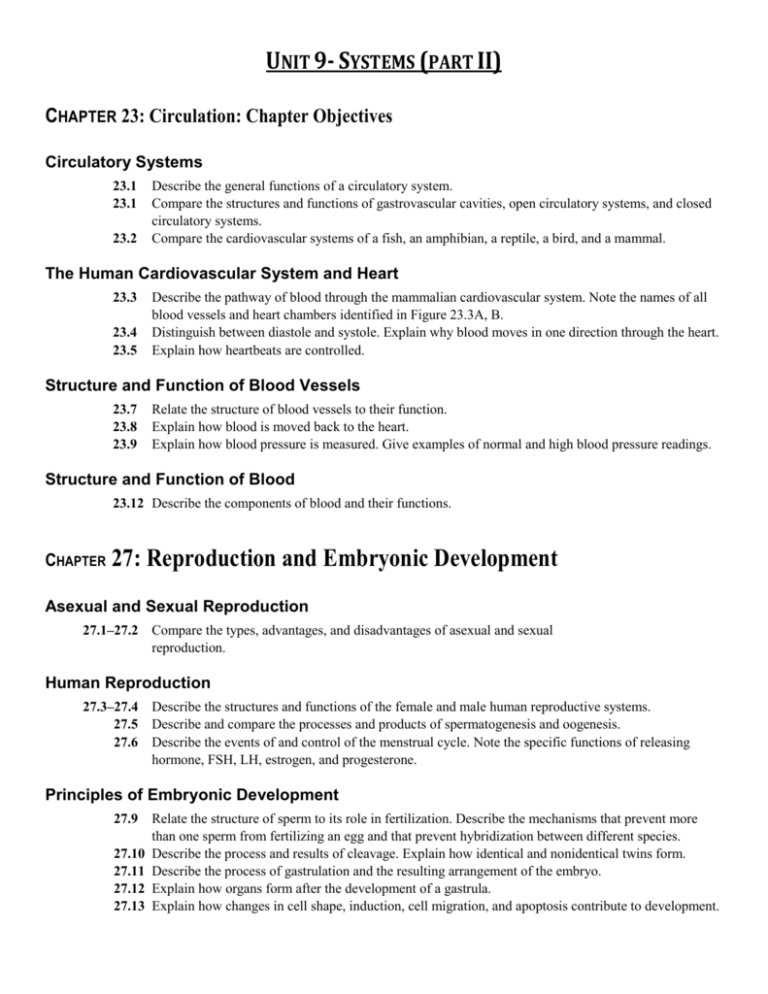
UNIT 9- SYSTEMS (PART II) CHAPTER 23: Circulation: Chapter Objectives Circulatory Systems 23.1 23.1 23.2 Describe the general functions of a circulatory system. Compare the structures and functions of gastrovascular cavities, open circulatory systems, and closed circulatory systems. Compare the cardiovascular systems of a fish, an amphibian, a reptile, a bird, and a mammal. The Human Cardiovascular System and Heart 23.3 23.4 23.5 Describe the pathway of blood through the mammalian cardiovascular system. Note the names of all blood vessels and heart chambers identified in Figure 23.3A, B. Distinguish between diastole and systole. Explain why blood moves in one direction through the heart. Explain how heartbeats are controlled. Structure and Function of Blood Vessels 23.7 23.8 23.9 Relate the structure of blood vessels to their function. Explain how blood is moved back to the heart. Explain how blood pressure is measured. Give examples of normal and high blood pressure readings. Structure and Function of Blood 23.12 Describe the components of blood and their functions. CHAPTER 27: Reproduction and Embryonic Development Asexual and Sexual Reproduction 27.1–27.2 Compare the types, advantages, and disadvantages of asexual and sexual reproduction. Human Reproduction 27.3–27.4 Describe the structures and functions of the female and male human reproductive systems. 27.5 Describe and compare the processes and products of spermatogenesis and oogenesis. 27.6 Describe the events of and control of the menstrual cycle. Note the specific functions of releasing hormone, FSH, LH, estrogen, and progesterone. Principles of Embryonic Development 27.9 Relate the structure of sperm to its role in fertilization. Describe the mechanisms that prevent more than one sperm from fertilizing an egg and that prevent hybridization between different species. 27.10 Describe the process and results of cleavage. Explain how identical and nonidentical twins form. 27.11 Describe the process of gastrulation and the resulting arrangement of the embryo. 27.12 Explain how organs form after the development of a gastrula. 27.13 Explain how changes in cell shape, induction, cell migration, and apoptosis contribute to development. 27.14 Explain how the one-dimensional information in DNA is used to direct the three-dimensional form of an embryo. Human Development 27.15 Describe the initial embryonic stages and the formation and functions of the extraembryonic membranes in humans. 27.16 Describe the main changes that occur during each of the trimesters of human development. CHAPTER 24: The Immune System Innate Immunity 24.1 24.2 24.3 Describe the nature of innate defenses in invertebrates and vertebrates. Describe the steps of the inflammatory response and explain how they help to prevent the spread of disease. Describe the structure and functions of the lymphatic system. Adaptive Immunity 24.4 Describe the specific nature of adaptive immune system responses. Define the terms antigen, antibody, passive immunity, and active immunity. 24.5 Describe the development and functions of B lymphocytes and T lymphocytes. Define and distinguish between the humoral immune response and the cell-mediated immune response. 24.7 Describe the process of clonal selection and compare a primary immune response to a secondary immune response. 24.11 Describe the specific functions of helper T cells and how they interact with other cells. 24.12 Explain how cytotoxic T cells destroy infected body cells. Disorders of the Immune System 24.16 Describe how the malfunction or failure of the immune system can cause disease. 24.17 Explain why allergies occur and what causes anaphylactic shock.

